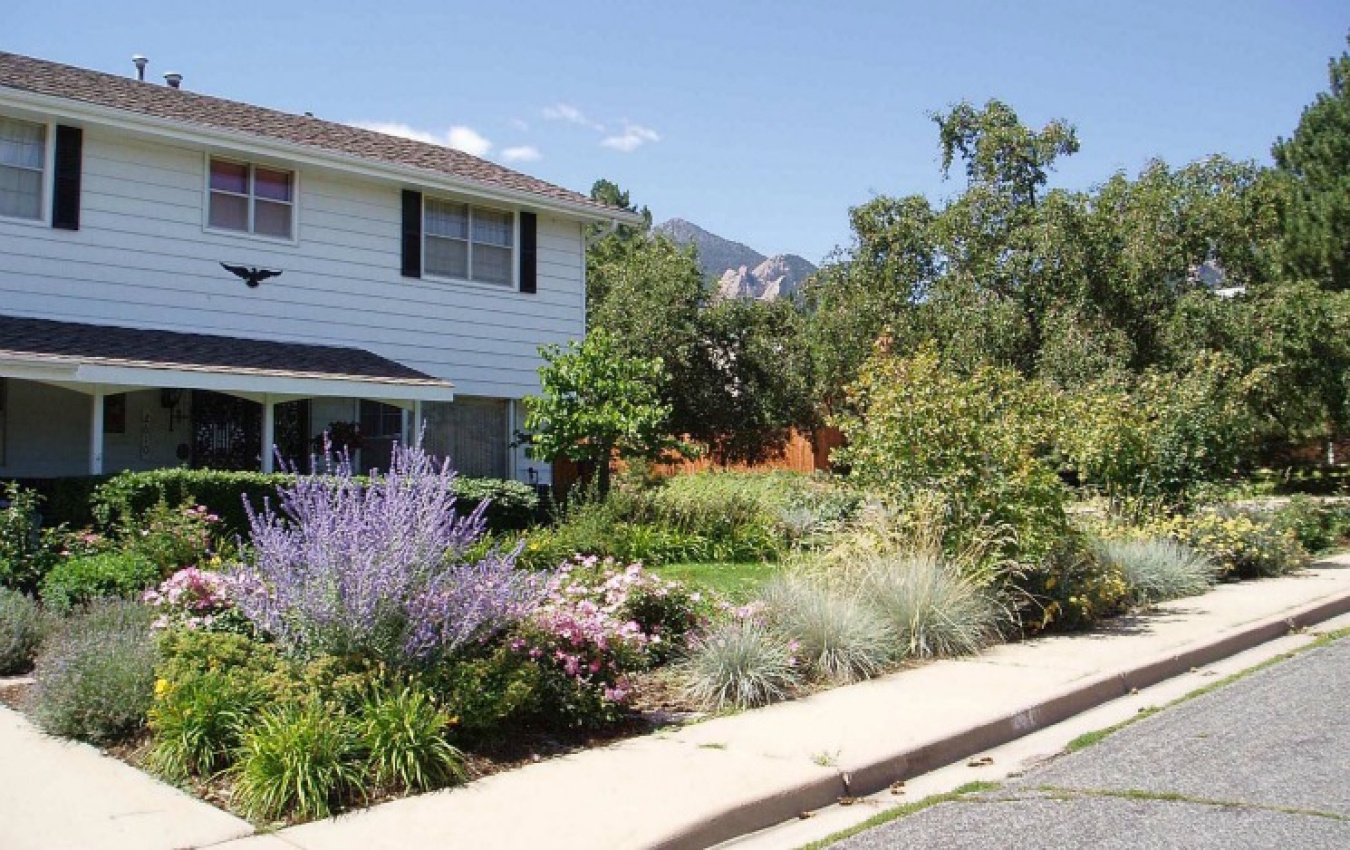You can design a landscape that conserves water as well as energy. Here is a brief overview of some water-conserving landscaping strategies.

This colorful water-conserving landscape requires only one-quarter the water a bluegrass lawn would use. | Photo courtesy of Jim Knopf.
Watering
If you can determine how much water your plants actually need, then you won't overwater them and waste water. It is important to not only understand a plant's particular watering requirements, but also evapotranspiration.
Evapotranspiration (Et) is the amount of water that is evaporated from the soil and transpired through the plant's leaves. This amount of water needs to be replaced through watering. If you know your area's Et rate, you can plan the amount of water to be replaced through irrigation. Call your local water district or cooperative extension service and ask about your Et rate or request an on-site water assessment (if available in your area). Your particular microclimate will also affect evapotranspiration in different areas of your yard.
It's best to water or irrigate your plants in the early morning when evaporation rates are low. This also provides plants with water before mid-day when the evaporation rate is the highest.
Xeriscaping
Xeriscaping is a systematic method of promoting water conservation in landscaped areas. Although xeriscaping is mostly used in arid regions, its principles can be used in any region to help conserve water. Here are seven basic xeriscaping principles:
- Planning and design. Provides direction and guidance, mapping your water and energy conservation strategies, both of which will be dependent upon your regional climate and microclimate.
- Selecting and zoning plants appropriately. Bases your plant selections and locations on those that will flourish in your regional climate and microclimate. Always group plants with similar water needs together.
- Limiting turf areas. Reduces the use of bluegrass turf, which usually requires a lot of supplemental watering. Consider substituting a turf grass that uses less water than bluegrass.
- Improving the soil. Enables soil to better absorb water and to encourage deeper roots.
- Irrigating efficiently. Encourages using the irrigation method that waters plants in each area most efficiently.
- Using mulches. Keeps plant roots cool, minimizes evaporation, prevents soil from crusting, and reduces weed growth.
- Maintaining the landscape. Keeps plants healthy through weeding, pruning, fertilizing, and controlling pests.
Subscribe to receive updates from Energy Saver, including new blogs, updated content, and seasonal energy saving tips for consumers and homeowners.

